Climate
-
Temperature
10-15°C -
Rainfall
75-100mm -
Sowing temperature
10-26°C -
Harvesting temperature
10-15°C (Winter)21-26°C (Summer)
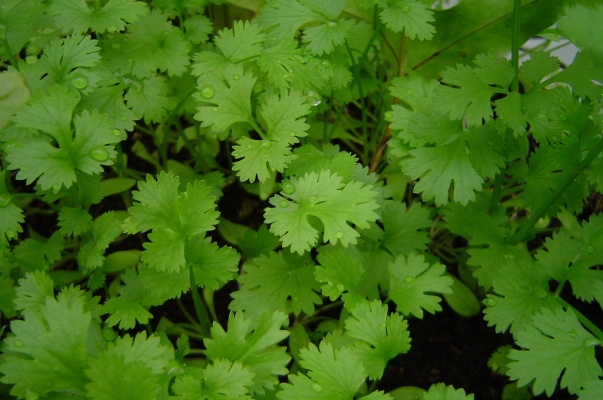












Coriander in hindi known as Dhania, is annual herb and important spice crop of India. Its seeds and fresh leaves are used for flavoring and garnishing of various dishes. Coriander leaves is excellent source of Vitamin C. It also possesses medicinal property, it is used against stomach disorder, seasonal fever, nausea and to cure several skin related disorder. India is largest producer and consumer of coriander seed. In India, Rajasthan is major coriander producing state followed by Madhya Pradesh, Assam and Gujarat. In Haryana, coriander area is increased to 33% compared to previous past years. Ambala, Gurgaon, Kurukshetra, Sonipat, Yamunanagar, and Rohtak are major coriander growing districts.




It can be grown in all type of soil rich in organic matter but give best result when grown in well drained loamy or sandy loam soils. For good growth it required pH of 6 to 8. Saline and alkaline soils are not suitable for coriander cultivation.
Narnaul Selection: Variety having more numbers of branches. Grains are bigger in size compared to other varieties. Gives average yield of 6-8 qtl/acre.
Pant Haritima: Variety having more vegetative growth. Two cuttings can be taken and it will not affect grain yield. It gives average yield of 6-8 qtl/acre.
Hissar Anand: Medium late variety having more number of branches and growth is bush type. Popular for leaves and grains. It give average yield of 7-8 qtl/acre.
Hisar Sugandh: High yielding variety, resistant to wilt and powdery mildew.
Hisar Bhoomit: It is resistant to stem gall disease. Its seeds are small having high oil content.
Hisar Surbhi: It is resistant to aphid and powdery mildew. Its seed are medium in size.
Other States Variety
GC 1: Grains are of medium size, round and yellow colored. Ready to harvest in 112 days. It is tolerant to wilt and powdery mildew. Gives average yield of 4.5 qtl/acre.
GC 2: Tall and semi-spreading variety with medium size grains. It is tolerant to wilt and powdery mildew. Gives average yield of 5.8 qtl/acre
CO 1: Dwarf variety with small size brown grains. Ready to harvest in 100-120 days. Gives average yield of 2 qtl/acre.
CO 2: Medium size yellowish brown grains, Ready to harvest in 90-100 days. Gives average yield of 2.08 qtl/acre.
RCr-20, RCr-41, RCr-435, RCr-436, RCr-684, Sadhana, Swathi, Sindhu, UD-446, Rajendra Swathi.
For uniform and levelled bed, plough land for two or three times and do planking after ploughing operation. Before last ploughing add, 40 qtl/acre of well decomposed cow dung in soil.
Time of sowing
When it is cultivated for leaves purpose, optimum time for sowing is mid-September to mid-December and when it is grown for seed purpose, complete sowing in first fortnight of November.
Spacing
For sowing seeds use row to row spacing of 30 cm and plant to plant spacing of 20cm.
Sowing Depth
Depth of soil should not more than 3 cm.
Method of sowing
Use pora method for sowing.
Seed Rate
For leaves purpose, use seed rate of 4-6 kg/acre whereas for grain purpose use seed rate of 3-4 kg/acre.
Seed treatment
Before sowing crushed and break seeds into two parts, it will help in easy and faster germination. Before sowing, soaked seeds in water for 8-12 hr. To prevent crop from wilt disease, root rot and damping off, treat seeds with Trichoderma viride/Pseudomonas fluorescens @ 4gm/kg of the seeds at before sowing.
Fertilizer Requirement (kg/acre)
| UREA | SSP | MOP |
| 55 | 125 | On soil test results |
Nutrient Requirement (kg/acre)
| NITROGEN | PHOSPHORUS | POTASH |
| 25 | 20 | - |
For good growth of crop, apply Nitrogen@25kg in form of Urea@55kg/acre and Phosphorus@20kg/acre in form of SSP@125kg/acre. Apply half of Nitrogen and full dose of Phosphorus at time of sowing. Apply remaining amount of Nitrogen at time of flower initiation.
To attain fast growth 15-20 days after germination take spray of Triacontanol hormone@20ml/10Ltr. Also one spray of NPK (19:19:19) fertilizer@75gm/15Ltr of water at 20 days of sowing helps in good and faster growth of crop. To obtain more yield, spray Brassinolide@50ml/acre/150Ltr water, 40-50 days after sowing. Take its second spray after 10 days. Also one spray of Mono ammonium Phosphate 12:61:00@45gm/15Ltr of water at leaf and branches growing stage helps in good growth and increases yield.
At initial growth stage of coriander, weed is a serious problem. Take one or two weeding operations to keep field weed free. Take first weeding 4 week after sowing and second 5-6 week after sowing.
Depending upon soil texture, rain and climate, four to five irrigation are required for good growth of crop. Apply first irrigation 30 days after sowing. Apply remaining irrigation on 60-70 days, 80-90 days, 100-105 days and 110-150 days. Avoid moisture stress at flowering and seed development stage.
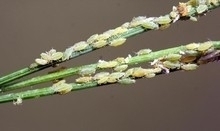
Aphid: If Infestation of aphid is observed, to control take spray of Imidacloprid@3ml/10Ltr water or Thiamethoxam@4gm/10Ltr of water.
Sucking Pest: They suck the sap from the leaves resulting in yellowing and dropping of leaves.
If infestation is observed, to control take spray of Imidacloprid 17.8SL@10ml/15Ltr of water.
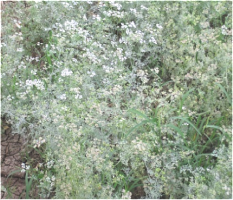
Powdery Mildew: Patchy, white powdery growth appears on upper surface of leaves.
If infestation is observed take spray of water soluble Sulphur@20gm/10Ltr of water. If needed repeat spray with interval of 10 days or take spray of Propiconazole10EC@200ml/acre/200Ltr of water.
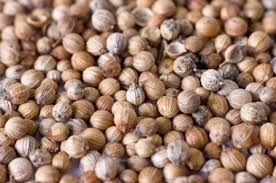
Grain Mould: To prevent crop from grain mould, take spray of Carbendazim@200gm/acre 20 days after grain set.
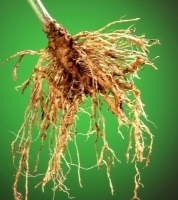
Root rot: To protect crop from root rot, as preventive measure do soil application of Neem Cake@60gm/acre. Also treat seeds with Trichoderma viride@4gm/kg of seed. If infestation of root rot, observed in field to control, drenched soil with Carbendazim @5gm/Ltr of water or Copper oxychloride@2gm/litre of water.
When crop attained 20-25 cm height harvesting for green leaves can be started. Three to four cutting can be taken. When crop is grown for seed purpose, it is ready for harvesting in April month. Harvest when capsule gets matures but having green color. Over ripe capsule fetch lower price.
After harvesting allowed crop to dry in sunlight for 6-7 days. After proper drying, carry out threshing after then cleaning operation.
1.Punjab Agricultural University Ludhiana
2.Department of Agriculture
3.Indian Agricultural Research Instittute, New Delhi
4.Indian Institute of Wheat and Barley Research
5.Ministry of Agriculture & Farmers Welfare
You have successfully login.
Your email and password is incorrect!